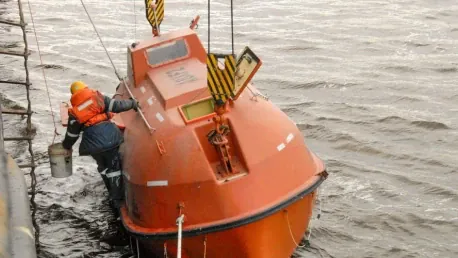When the lock gate at Müden, Germany, suffered destruction due to a shipping incident on December 8, a critical transportation artery connecting the Rhine to Western Germany, Luxembourg, and France faced unprecedented disruption. As a result, 72 vessels were trapped, causing significant logistical headaches for shipping companies and affecting the delivery of vital goods and fuel. Yet, in an extraordinary feat of coordination and engineering, the Federal Waterways and Shipping Administration successfully cleared the jam ahead of schedule, bringing much-needed relief to the waterway’s users.
Coordinated Rescue Efforts
Manual Operations and Equipment Deployment
The Federal Waterways and Shipping Administration embarked on an extensive and carefully planned operation to free the trapped vessels. Employing a series of manual operations, teams used removable dam beams, which are generally reserved for maintenance, to conduct 78 emergency lock operations over a strenuous 10-day period. This involved around-the-clock work, under all weather conditions, totaling 192 hours of continuous effort. Utilizing cranes, the team placed beams over 1,000 times, a process that required meticulous precision.
Divers played a crucial role in affixing chain hooks necessary for lifting the beams and securing them in place. These divers entered the lock chamber 1,840 times, an astounding figure that underscores the physical demands and risks involved in this operation. The logistics of connecting chain hooks and maneuvering heavy beams showed a high level of coordination among team members. Without such collaboration and determination, freeing these vessels ahead of the debacle would have been impossible. In this spirit of teamwork and perseverance, the first vessel passed through the lock by December 16, with all 72 ships continuing their journeys by December 27.
Impact on Cargo and Passenger Transit
The lock’s closure had a significant ripple effect on cargo and passenger transit routes, disrupting operations for various enterprises. Notably, Steelmaker ArcelorMittal in Luxembourg had to resort to alternate logistical arrangements to ensure their goods reached their destinations. This disruption highlighted the Müden lock’s critical role as a transportation linkage that should not be overlooked. The ability of the Federal Waterways and Shipping Administration to clear the blockade so swiftly averted further economic strain on companies relying on this route for timely delivery of materials and goods.
The swift resolution of this crisis also underscores the interconnectedness of European river traffic, which includes the transport of fuel, goods, and passengers. By getting the vessels back on their way, the administration facilitated the resumption of a critical supply chain that spans multiple countries. As the waterways returned to regular operations, focus shifted to the essential next steps: the lock’s substantial repair work, slated to begin mid-January.
Future Repair Work
Complex Restoration Process
With the immediate crisis averted, plans for comprehensive repairs began. These repairs involve intricate procedures such as sandblasting concrete, fabricating and installing two new sealing strips, and preparing two gate frames dating back to 2005. Additionally, four new neck bearing blocks will be manufactured and installed, pivotal for the lock’s functionality. The assembly of all these components requires careful precision, a task befitting the same level of expertise demonstrated during the emergency operations.
The scheduled start date for the reconstruction phase is January 15, aiming for completion by early February. If completed as planned, these repairs will conclude a month ahead of previous forecasts, setting a new benchmark for efficiency in emergency repair operations. The lock at Müden will be restored to its full operational status, ensuring no future disruptions plague this crucial transportation route.
Ensuring Future Resilience
Ensuring the resilience of this critical waterway is paramount. After the lock gate at Müden, Germany was destroyed on December 8 due to a shipping accident, vital transportation links connecting the Rhine to Western Germany, Luxembourg, and France were severely disrupted. This incident trapped 72 vessels, creating huge logistical challenges for shipping companies and affecting the delivery of essential goods and fuel. The sudden blockage put a massive strain on the supply chain, highlighting the critical nature of the waterway for regional commerce. Shipments were delayed, causing ripple effects across industries reliant on timely deliveries.
In response, the Federal Waterways and Shipping Administration launched a highly coordinated and efficient effort to address the problem. Through meticulous planning and around-the-clock work, they managed to clear the blockage ahead of schedule. This impressive feat brought much-needed relief to the stuck vessels and restored the flow of goods through this essential route. The quick resolution not only alleviated the immediate congestion but also underscored the importance of effective crisis management in maintaining key transportation networks.









